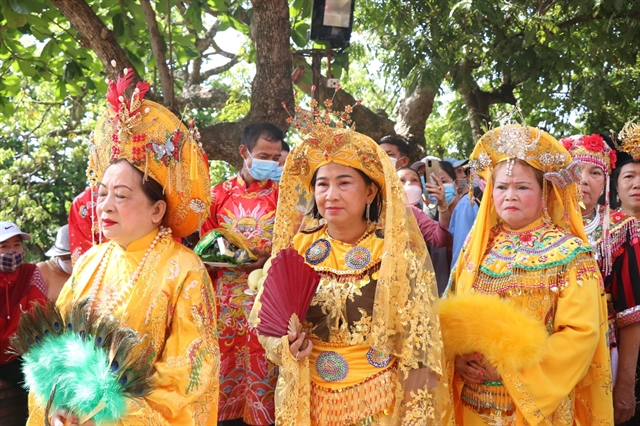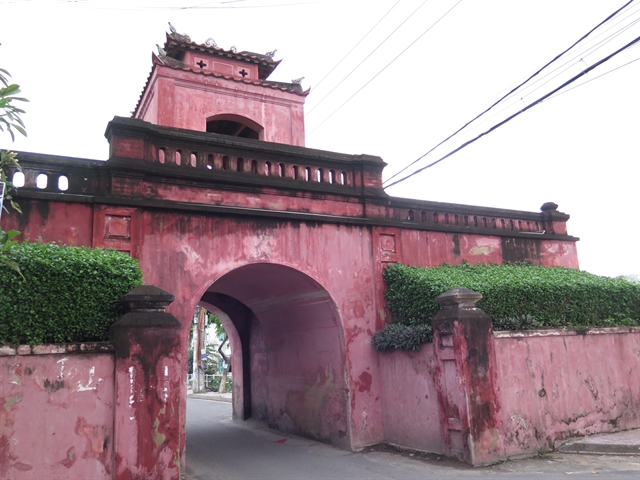 Life & Style
Life & Style


|
| LOCAL FESTIVAL: Visitors take part in the Tháp Bà (Ponagar) Tower Festival 2022 in Nha Trang of Khánh Hòa Province. — VNA/VNS Photo Tiên Minh |
KHÁNH HÒA — Khánh Hòa Province’s People's Committee has approved a development plan for community-based tourism areas by 2025.
The province will spend VNĐ8 billion (US$343,465) to build new community-based tourism areas in suburban, rural and mountainous areas.
It will also focus on developing more community-based tourism products to attract more visitors.
Lê Hữu Hoàng, deputy chairman of the provincial People’s Committee, said: “Khánh Hòa has the potential to develop community-based tourism.”
Hoàng added the rural and mountainous areas in the province were home to ethic minority groups who were preserving and promoting traditional cultural identities such as costumes, living habits, food, festivals, folk music, song and dance, and handicrafts.
In addition, the province also has beautiful natural landscapes such as river, lakes, streams, waterfalls and lagoons which were favourable to developing tourism activities involving the local community and nature such as eco-tourism, adventure tourism, heritage tourism and agricultural tourism, he added.
Under the plan, Khánh Hòa will subsidise VNĐ15 million ($643) for each community-based area to renovate its facilities, and VNĐ40 million ($1,700) to develop new tourism products and services.
The province will provide VNĐ100 million ($4,300) per year for each district to offer training courses for individuals and households, and to promote its tourism products among travel agencies and tourists.
Khánh Hòa has only two community-based tourism programmes, in Ninh Vân Commune of Ninh Hoa District and Diên Xuân Commune of Diên Khánh District.
The programme in Ninh Vân highlights on historical relics and local cuisine long with with working garlic fields.
In Diên Xuân, the Nhân Tâm Ecotourism Service Limited Company is cooperating with 20 farming households to launch agricultural tourism to introduce local fruit specialties.

|
| HISTORIC RELIC: About 10km from Nha Trang, Diên Khánh Old Citadel, which was built in 1793 in Diên Khánh District, is one of the most famous historical and cultural relic sites of Khánh Hòa Province. — VNA/VNS Photo Phan Sáu |
Apart from islands and seas, the province has many historical and cultural relic sites such as Tháp Bà (Ponagar) Tower and Diên Khánh Old Citadel, famous institutes such as Institute of Oceanography and Pasteur Institute in Nha Trang, and traditional festivals such as Nghinh Ông Festival, Tháp Bà Festival, and Bỏ mả (leaving tomb), the biggest festival of the Raglai ethnic community, which has been recognised as national intangible cultural heritage.
Hoàng said: ”Although the province has strong advantages in developing community-based tourism, the sector has developed slowly for years.”
He mentioned that the province still had weaknesses in management in agencies and localities, a shortage of attractive tourism products and human resources, and poor infrastructure and services.
“The new community-based tourism plan is expected to attract more tourists who will stay longer in the province,” Hoàng said.
During 2016-2019, the province welcomed a total of more than 23 million visitors, but only 100,000 visitors participated in community-based tourism each year.
Annual revenue from community-based tourism between 2016-2019 was only VNĐ2.5 billion ($107,243). — VNS




